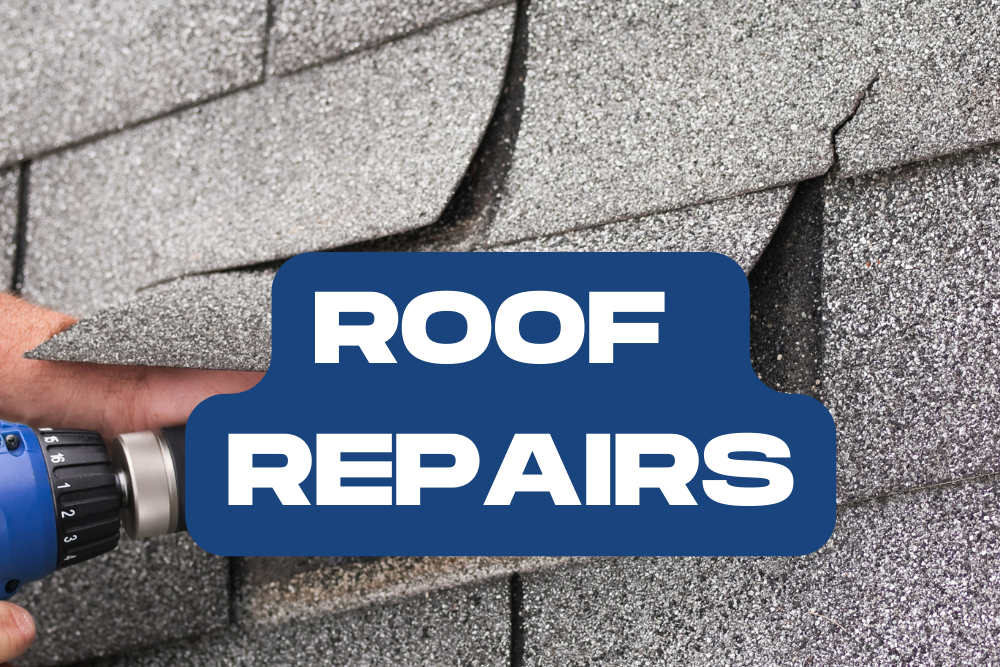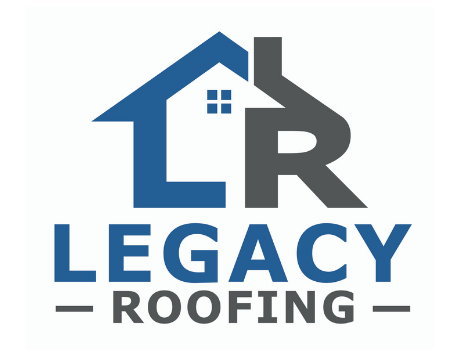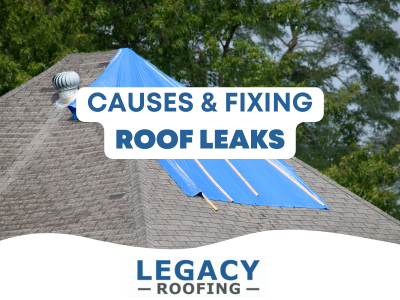Roof leaks are never fun to deal with!
From diagnosing your roof leak to understanding whether you have a damaged roof or some other issue, hiring a professional roofing company is almost always the correct course of action. However, that can also be an issue when you don’t understand the common causes of roof leaks and how to fix them!
Luckily for you, though, in this article, the team at Legacy Roofing of Idaho of Boise will help you determine if you have a roof leak and how to address it. We will help you learn the signs, causes, and solutions for roof leaks!
Roof Leak Guide:
One of our famous sayings here at Legacy Roofing of Idaho is, “An informed homeowner is the best homeowner.” That is why we love sharing as much as possible regarding your home’s roof, protecting it, and preserving it appropriately.
We know that dealing with a roof leak is not fun, and while we encourage regular roof maintenance, leaky roofs can come out of nowhere. We have seen almost every roof leak, from flashing issues to Mother Nature.
Quick Roof Leak Tips
- Roof leaks always start small but when you roof is leaking, it can lead to bigger issues like mold growth, rotting wood, and interior damage.
- When a leak appears, chances are it isn’t brand new. A professional roofer can often diagnose the leaky roof and any accompanying roof damage!
- If you suspect a leaky roof, get a temporary fix to hold you over. Sometimes you will want to get the roof repaired; other times you might need a roof replacement. It also doesn’t hurt to see what insurance has to say!
- Find the leak! Some will say you can use a garden hose to find a leak on your roof, but this can cause further damage. If you notice water dripping or water stains, well, you know you have a leak. Performing regular home maintenance and roof checks is proactive, but sometimes, you need to call a roofing contractor!
- ➡️Related: Roofing Facts You Might Not Know!
14 Causes of Roof Leaks:
Knowing is half the battle; fixing leaks is the other half. You usually won’t notice a roof leak until it is pronounced, or in most cases, you see a wet ceiling or damage to interior walls. However, determining what causes a possible roof leak is vital to diagnosing and then fixing the said leak.
Here is a quick list of the most common causes of roof leaks:
- Inclement weather (hail and wind storms)
- Missing shingles lifted shingles
- Loose or broken shingles in the yard or visible from the ground.
- Pipe collar seals & rubber vent boots/collars that are cracked (usually won’t know until it’s too late).
- Flashing leaks (areas around chimneys) or improperly installed cladding and flashing kit
- Ridge vent leaks
- Skylights, dormers, and chimney areas where moisture can penetrate your roof from improper installation
- Clogged gutters (causing heavy rain)
- Roof vents or any area where something protrudes from your roof can lead to leaks.
- Holes in your roof
- Rotting fascia boards
- Poor roof caulking
- Improper decking nails and shingle nail patterns
- Age of roof (really old roofs that no longer work)
While there could be another cause, such as a giant windstorm like a Noreaster, most leaks are slow-growing. Put another way, the leak starts small and gradually grows and increases over time. Water damage is the common visible sign of a leaking roof, and some homeowners are shocked to find extensive damage under their roof.
This is one reason we recommend following the steps below to ensure your roof stays healthy!
How to find a leak in your roof:

The most obvious sign that you have a roof leak is when you see a water stain on your ceiling drywall.
It isn’t uncommon for someone to wake up one morning, go into a room or bathroom, and see discoloration on their ceiling after a heavy rainstorm. Now, this doesn’t necessarily mean you need a new roof; in fact, it probably means you need a few shingles repaired or a pipe collar/vent boot replaced.
Here are ways to diagnose a leaking roof before calling a roofing contractor!
- Always look for missing shingles. They are easy to spot, so if you see some missing, replace them immediately before the problem becomes too big! You should hire a professional roofer to reinstall the shingles.
- Do an annual attic inspection. Using a flashlight and observing your roof decking, look for wetness, mold, stains, and moisture in your attic.
- Find a free roofing inspector. Most roofing companies will inspect a roof for free. Now, many might try to sell the idea of a new roof, but if you want to get a solid inspection, simply call a reputable roofing company.
- Look at the common leak areas. Leaks can occur in skylights, pipe collars, roof vents, and roof flashing areas. Also, if you see a dip or sag in your roof’s shingles – you might want to do #3 above and have it inspected.
- Exposed nail heads & nail pops. If you see a few nail heads aka nail pops, chances are you could have a roof leak in that area. When a roofing contractor installs a new roof, they not only have to use roofing nails, but they also need to make sure they follow the proper nail patterns. Improperly driven nails can be a cause of your leaky roof!
If you follow the list above and you can say yes to any, this could mean you might have a possible roof leak. Be sure to act fast! Roof leaks never get better with time; they only get worse! Below is how to go about addressing a roof leak issue!
Steps to Fix a Leaking Roof Fast!

Step 1: Contain the leak
In most cases, you will not have droves of water falling into your home. While that can be common for flat roofs in commercial settings, most homes have a steeply sloped roof, which helps prevent water pooling.
That said, if you have water leaking prior to a roof repair, be sure to have tarps and buckets to catch the water and mitigate potential water damage. Relieving a leak bulge in your ceiling might be necessary, and on the rare occasion you have to do that, have a contractor on the line to help you!
Step 2: Complete a visual roof inspection.
Got a pair of binoculars? Grab them, survey your roof, and look for any missing shingles especially after storms. Be sure to be extra vigilant when heavy Boise wind storms sweep through the area! While you wont be able to spot things like missing nails, you can observe small holes or flashing damage that are often a major cause of a leak.
- After storms: From pipe boot failure to flashing leaks, your roof is most vulnerable after heavy rain, especially if it is nearing the end of its life expectancy.
- After snow: Ice dams are common in the Treasure Valley after snow storms, and the melting ice sitting in your roof valley can lead to leaks. Depending on the age of your roof, if your home doesn’t have an ice and water shield, you might see a leak spring up.
- After heavy wind:
You can also look for low spots on your roof and anything else that looks out of place. Many real estate agents will ask for a roof inspection or condition check when selling or buying a home, so start with your street view visual inspection! If you find damaged shingles, damaged flashing, or other debris on your roof, you will want to call a roofing company.
Step 3: Call a Roofing Company
Once you think you have a roof leak or want to get a roof inspection, your next logical step is to call a reputable roofing company. A professional roofing company can inspect your roof joints, chimney leaks, roofing caulk, roof valleys, and flashing. This deeper inspection will help diagnose any potential roofing leaks that must be addressed. Your roofing system could be in great shape, but if your gutters, fascia board, or flashing are causing issues, a roofing contractor such as Legacy Roofing can help you.
Be sure to ask the correct questions: is the company licensed and insured? Once they come out and assess your situation, it doesn’t hurt to take their information and get a second opinion. Based on what the different roofing companies recommend, you can then elect to repair your roof leak or replace your entire roof’s shingles. Roofing issues are not something to drag your feet on since they can often lead to bigger problems!
Step 4: Fix Your Roof’s Leak
The goal is to fix your leaking roof as fast as possible. As stated, a small leak can become a big leak in a matter of weeks, and even sometimes days based on the rainstorms.
Waiting to fix your roof leak can lead to more damage, such as having to replace roof decking and fascia boards and adding even more replacement shingles. Depending on the cause of the leak and its severity, you can work with your homeowner’s insurance policy to see if the repair or even new roof is covered by insurance! New flashing and new gutters are also potentially the fix if your leak is penetrating an exterior wall.
We DO NOT recommend getting on a ladder and inspecting the roof yourself or trying to repair the leak yourself. Ladders are dangerous and can cause severe injury or even death. Secondly, most repairs are not as simple as just adding a shingle or two. The leak often requires an expert to fix this problem!
Final Word on Leaks & Roof Repairs:
Hopefully, this list of roof leaks and repair solutions will inform you and not overwhelm you. The simple solution is that if you suspect you have a leaking roof, you will want to have a roofer inspect it. They can find chimney leaks, fix your step flashing, and determine if the leaking water is from an ice dam or something else.
Before you do anything, call a certified roof company that can work with insurance companies to help you. When you want to fix your roof, have a few options:
While the repair may consist of many things, from replacing flashing to adjusting loose shingles, you should always take a leaky roof seriously! Typically, we have seen that the leak repair will only cost a few hundred dollars or less than your deductible. In that case, you won’t need to file a claim with insurance, something a dependable roofing company can help you with! But that starts with you calling the right roofing company in the first place.
Additionally, when you have a roof leak, if the issue is minor and can be quickly handled with a perma boot replacement or a few new shingles, that is good. But considering the age of your roof, there are instances when roof repairs are simply a bandaid on a gaping wound.
Put another way, if the roof needs to be replaced (which is sometimes more straightforward), it’s sometimes cheaper long term to go that route! Either way, the best way to start is to reach out here or use the contact button below simply!
Here at Legacy Roofing of Idaho, we will help you with all roofing needs, including those pesky roof leaks!
Frequently Asked Questions
1: What are the common signs of a roof leak?
Common signs of a roof leak include water stains on ceilings or walls, peeling paint, mold or mildew growth, and damp spots in the attic. If you notice any of these indicators, it’s essential to investigate further to prevent more extensive damage.
2: How can I temporarily fix a roof leak until a professional can help?
A temporary fix for a roof leak and the damaged area can include placing a tarp over the affected area to prevent further water intrusion. You can also use roofing cement to seal small cracks or gaps. You will also want to address any standing water or cover a small hole. However, these solutions are not permanent, so scheduling a professional inspection as soon as possible is essential.
3: What causes roof leaks, and how can I prevent them?
Roof leaks can be caused by various factors, including damaged shingles, worn flashing, clogged gutters, and improper installation. To prevent leaks, regularly inspect your roof, clean gutters, trim overhanging branches, and ensure proper ventilation in your attic. Scheduling periodic professional inspections can also help catch potential issues early.
4o mini


 Why Are Roofs So Expensive? Understanding Costs of Roofing in Boise
Why Are Roofs So Expensive? Understanding Costs of Roofing in Boise